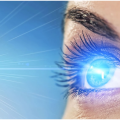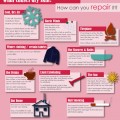Sunburn is a type of radiation burn that results from an over exposure to ultra violet radiation, commonly from the sun. An excess of UV radiation can be life threatening in extreme cases. Sun tan is produced on exposing the skin to lesser amounts of UV radiation.

Signs of sunburn
The skin turns red and hurts on getting sunburn. The swelling and blisters depends upon the severity of sunburn. The basic symptoms are the feeling of flu, feverish, with chills, nausea, headache and weakness. After few days, the skin will start peeling and itching to rid itself of sun-damaged cells.
Causes of sunburn
The explanation behind sunburn is known. The skin eventually turns red, feels burn and irritated, on exposure to the sun for a period of time.
Things get little more complicated under the skin. Three wavelengths of ultraviolet light are given by sun and these are:
- UVA
- UVB
- UVC
UVC light doesn’t reach the surface of earth. UVA and UVB not only reach your beach towel, but they penetrate your skin as well. UVA and UVB also damage the skin. Sunburn is the most obvious sign that you’ve been sitting outside for a long period of time. But the damage caused by sun is not always visible. The ultraviolet rays change the DNA under the surface of the skin, thus prematurely aging the skin. With the passage of time the DNA damage contributes in causing skin cancers that also include deadly melanoma.
How soon sunburn begins depends on:
- Skin type
- Intensity of sun
- Time period of exposure to the sun
A blonde-haired, blue-eyed woman redden far sooner than an olive-complexioned woman sitting out on a sunny day in New York City.
Treatment
The most important thing is to avoid exposure to sun while healing and to prevent future burns. Time is also one of the treatments. Mostly sunburns are healed within few weeks. Using cool and wet clothes on the sunburned areas, taking frequent cold showers or baths, application of soothing lotions containing aloe vera are effective home remedies for treating sunburns. Medicines containing paracetamol, aspirin, and ibuprofen help in relieving the itching. Some topical steroids and creams may also help with sunburn swelling and pain.
Prevention
Below are some useful tips for keeping our skin safe while staying out:
Watch proper clock and timings: the peak timings of strong sun’s rays are between 10 a.m. to 4 p.m. If it is not possible to stay in-door during these hours then try to keep you stick to some shady area at least.
Wear right clothes: use sun-protective clothes to cover your body while exposing to sun like:
- A brimmed-broad hat
- Full sleeves shirts and pants
- Sunglasses having UV-blocking
Use sunscreen: with at least one ounce of broad-spectrum sunscreen, cover any exposed area of skin liberally. That means use sunscreens that give protection against both UVB and UVA rays.
The sun protection factor (SPF) of the sunscreen should be at least 30. For application of sunscreen one should follow these basic tips:
- Sunscreen should be applied 30 minutes before going outside.
- UV rays can penetrate clouds; therefore sunscreens should also be used on overcast days.
- If you swim or sweat heavily, than reapply sunscreens after every two hours.
Image source: www.prevention.com



 (8 votes, average: 3.38 out of 5)
(8 votes, average: 3.38 out of 5)









